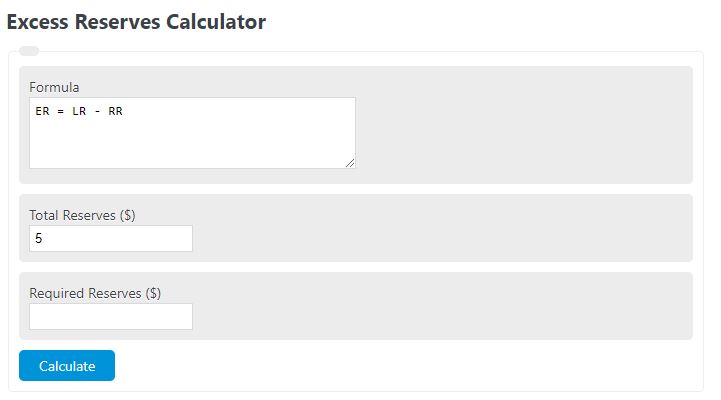Enter the total legal reserves and the total required reserves into the calculator to determine the excess reserves.
- Reserve Ratio Calculator
- Sinking Fund Calculator
- Cash Flow From Assets Calculator
- Money Supply Calculator
- Reserve Percentage Calculator
Excess Reserves Formula
The following formula can be used to calculate the excess reserves of a bank.
ER = LR - RR
- Where ER is the excess reserves ($)
- LR is the legal reserves ($)
- RR is the required reserves ($)
To calculate the excess reserves, subtract the required reserves from the legal reserves.
Excess Reserves Definition
An excess reserve is defined as the difference between the legal reserve amount and the required reserve amount.
Excess Reserves Example
How to calculate excess reserves?
- First, determine the total amount of reserves.
Measure or calculate the total amount of reserves currently held by the bank. For this example, we will say the bank has $1,000,000.00 in reserve.
- Next, determine the required reserves.
Based on the laws of the country, determine the required amount of reserves that need to be held. We will assume this is $500,000.00.
- Finally, calculate the excess reserves.
Using the formula, we find the excess reserves to be, $1,000,000 – $500,00 = $500,000.
FAQ
Excess reserves are the amount of extra currency/money a central regulatory bank has over the reserve amount required by law.
Central banks and regulatory authorities are often required to keep a certain amount of money on hand as reserves in case of emergency.

